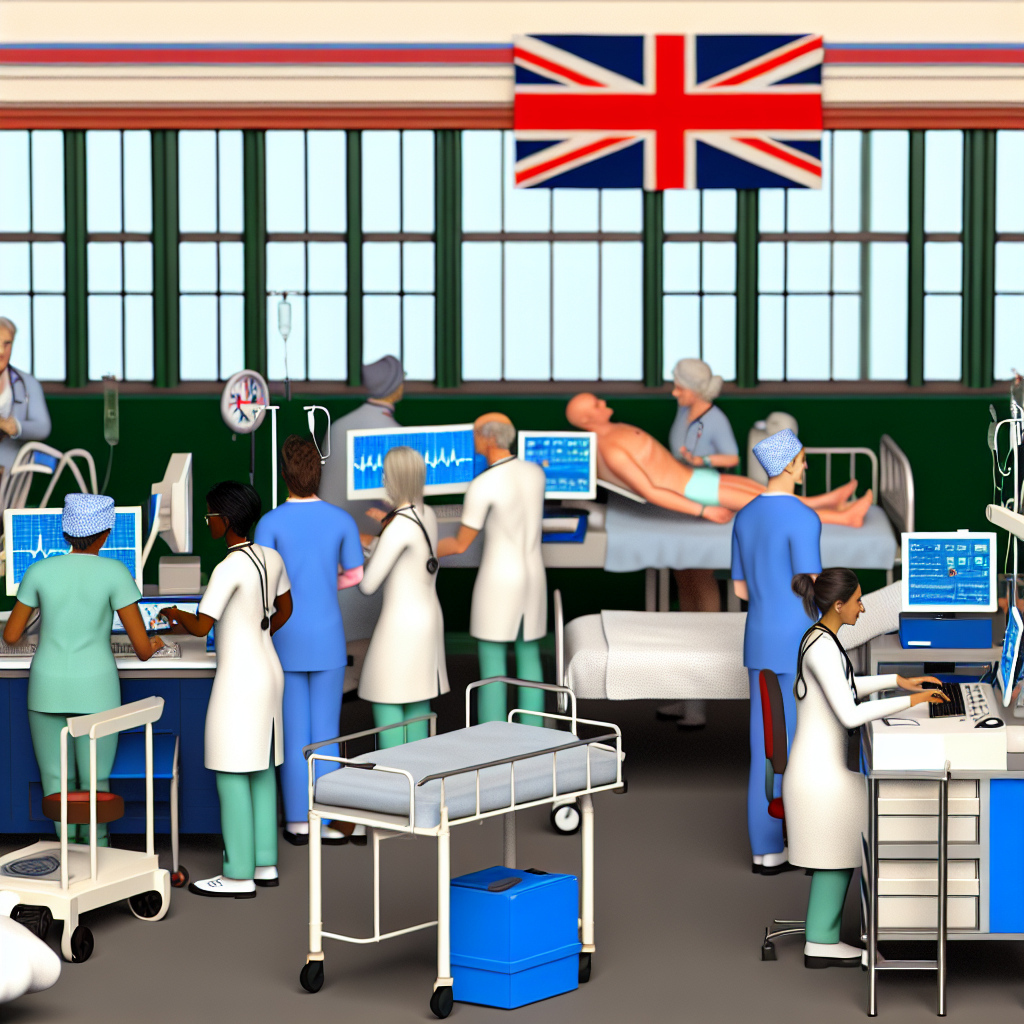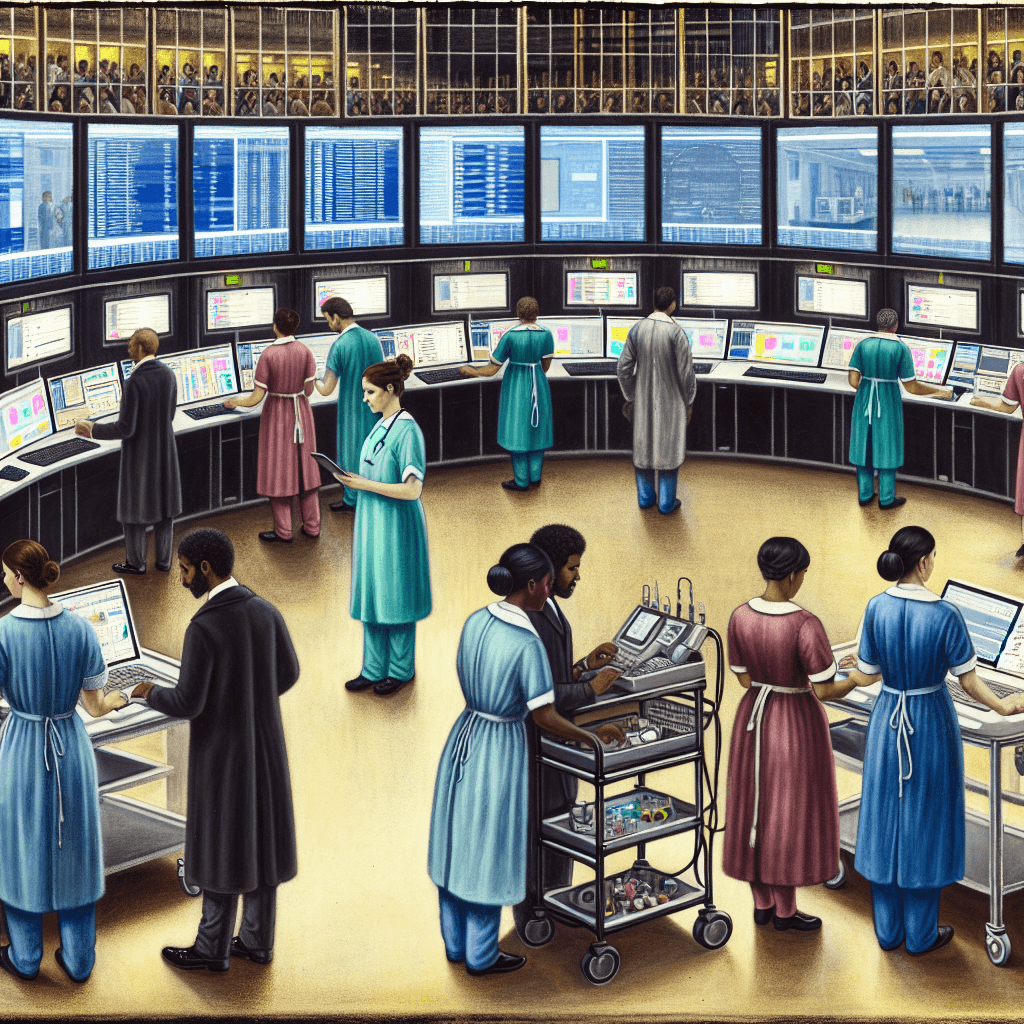Explore how Healthcare IT in the UK enhances patient care through innovative technology solutions, improving efficiency and data management.
Healthcare IT in the UK

Table of Contents
- Healthcare IT in the UK: Revolutionizing Patient Care and System Efficiency
- The Landscape of Healthcare IT in the UK
- Key Components of Healthcare IT
- Impact of Healthcare IT on Patient Care
- Case Study: Implementing EHRs in NHS Hospitals
- Challenges in Healthcare IT
- Overcoming IT Challenges
- The Future of Healthcare IT in the UK
- Emerging Trends
- Conclusion: Key Takeaways
Healthcare IT in the UK: Revolutionizing Patient Care and System Efficiency

The integration of Information Technology (IT) in healthcare has transformed the way healthcare is delivered in the United Kingdom. This article explores the various facets of Healthcare IT in the UK, examining its impact, challenges, and future prospects. By leveraging technology, the UK’s healthcare system aims to enhance patient care, improve system efficiencies, and reduce operational costs.
The Landscape of Healthcare IT in the UK
The UK’s National Health Service (NHS) has been at the forefront of adopting IT solutions to improve healthcare services. From electronic health records (EHRs) to telemedicine, the NHS has implemented various technologies that streamline operations and provide better patient care. The commitment to digital transformation is evident in the government’s ongoing investments and policy reforms aimed at integrating IT across all levels of healthcare.
Key Components of Healthcare IT
- Electronic Health Records (EHRs): EHRs are digital versions of patients’ paper charts. They contain comprehensive patient data and are accessible to authorized healthcare providers.
- Telemedicine: This technology facilitates remote diagnosis and treatment, enabling patients to consult with healthcare providers via digital platforms.
- Mobile Health (mHealth): mHealth involves the use of mobile devices to monitor patients’ health and communicate with healthcare providers.
- Health Information Exchanges (HIEs): HIEs allow the sharing of health information across different healthcare systems, improving the coordination of care.
Impact of Healthcare IT on Patient Care
Healthcare IT has significantly improved the quality of patient care in the UK. EHRs provide healthcare professionals with real-time access to patient data, leading to more accurate diagnoses and personalized treatment plans. Telemedicine has made healthcare more accessible, especially in rural areas, reducing the need for travel and minimizing the strain on healthcare facilities.
Case Study: Implementing EHRs in NHS Hospitals
A notable example of successful IT implementation in the UK is the adoption of EHRs across NHS hospitals. This initiative has led to improved patient safety through better medication management and reduced clinical errors. Hospitals have reported faster access to patient records, which significantly speeds up the decision-making process in critical care situations.
Challenges in Healthcare IT
Despite the benefits, the integration of IT in healthcare comes with its set of challenges:
- Data Security: With the increase in digital data, there is a heightened risk of data breaches and cyber-attacks.
- Interoperability: Different IT systems and applications need to communicate seamlessly to ensure effective data exchange and integration.
- Cost: The initial setup and ongoing maintenance of IT systems can be costly for healthcare providers.
- Resistance to Change: There is often resistance from healthcare professionals due to the complexities involved in transitioning to new systems.
Overcoming IT Challenges
To address these challenges, the NHS has implemented robust cybersecurity measures and is continuously working on enhancing the interoperability of its IT systems. Additionally, training programs are being conducted to familiarize healthcare staff with new technologies, thereby reducing resistance to change.
The Future of Healthcare IT in the UK
The future of Healthcare IT in the UK looks promising, with several innovations on the horizon:
- Artificial Intelligence (AI): AI is expected to play a significant role in diagnostics, patient care management, and personalized medicine.
- Internet of Medical Things (IoMT): This involves the use of connected devices that can monitor patient health in real-time and transmit data to healthcare providers.
- Blockchain: Blockchain technology could enhance data security and patient privacy by creating tamper-proof records of health data transactions.
Emerging Trends
One emerging trend is the use of big data analytics to predict disease outbreaks and improve public health responses. Additionally, virtual reality (VR) is being explored for therapeutic purposes and training healthcare professionals.
Conclusion: Key Takeaways
Healthcare IT in the UK has made significant strides in improving the efficiency and quality of healthcare services. The integration of EHRs, telemedicine, and mHealth has revolutionized patient care, making it more personalized and accessible. However, challenges such as data security and system interoperability continue to pose hurdles. Looking ahead, advancements in AI, IoMT, and blockchain hold the potential to further enhance the effectiveness of healthcare services in the UK. By continuing to invest in and adopt innovative technologies, the UK can maintain its position as a leader in healthcare IT.
In conclusion, while there are challenges to overcome, the proactive approach of the NHS and government towards healthcare IT promises a future where technology and healthcare go hand in hand to provide better outcomes for patients across the UK.








